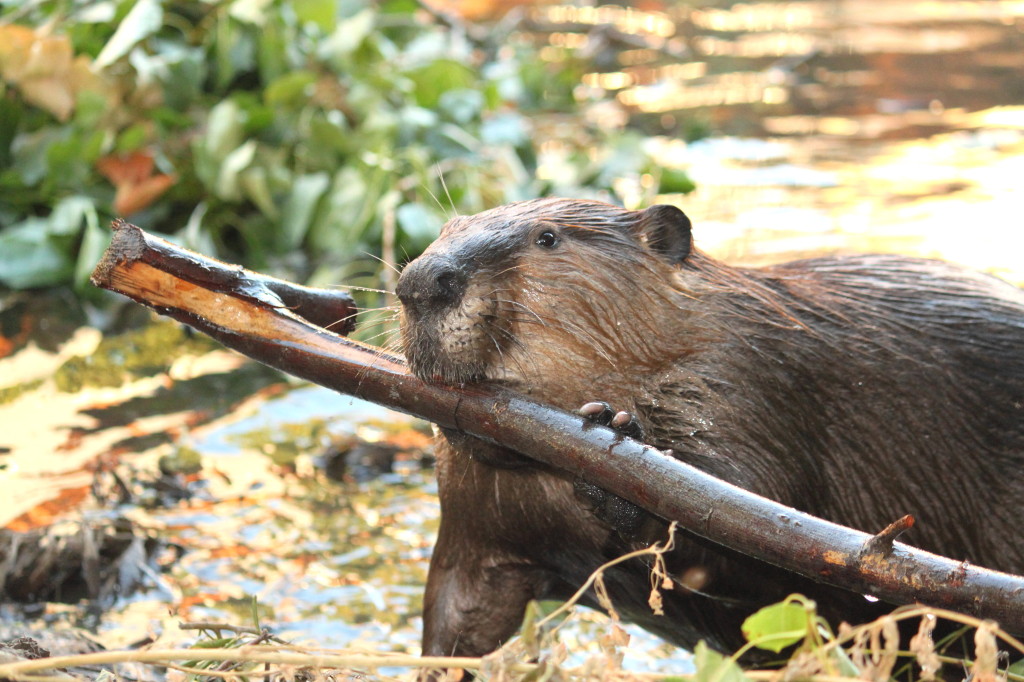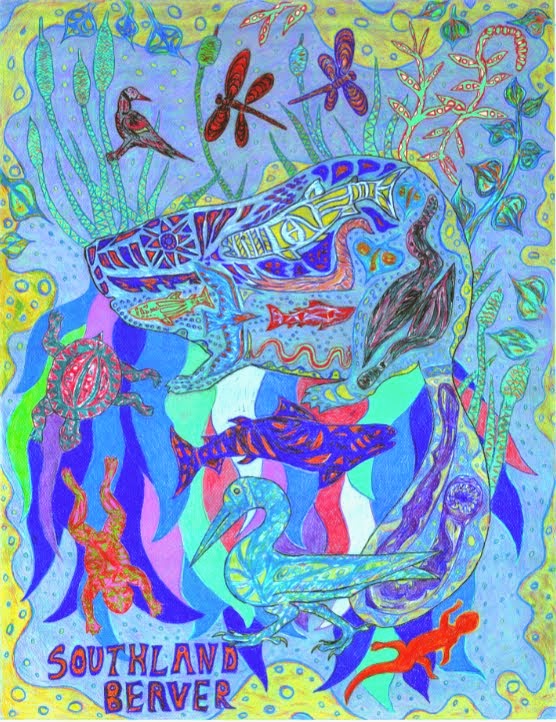 |
| Cheryl Reynolds. Worth A Dam |
"We have the least understanding of any state on what used to live here."
Rick Lanman, Institute of Historical Ecology
"I knew this assumption that beaver were never in the Bay Area was bogus just from life experience. There was a beaver right under I-680 when I would drive home. I knew they were there."
Heidi Perryman, Martinez Beavers/Worth a Dam
I want to concentrate on this next quote by Brock Dolman of the Water Institute at Occidental College as it pertains directly to the question of beavers at the limit of their range in coastal California, namely southern California.
"We felt the missing piece was that beaver were never as numerous (as otters) and a group of native folks set on capturing them wouldn't take long in eradicating them, especially in riparian systems where there is not a lot of room to move."
Now I think this quote really contains a lot of good stuff but I think it might go over a lot of people's heads. First off we should clarify that otter refers to sea otter, and they roamed all the way down into Baja. And they were ruthlessly hunted for their pelts by fur trappers. Once the sea otters started getting low in number trappers looked at what else was around. By supplying native Americans with steel traps, the wary and elusive beaver - normally a difficult quarry - was now an easy and reliable source of fur to trade with the Europeans. Now with this in mind we must remind ourselves that coastal California, especially getting into southern California, never had the water and therefore the population of beavers that areas like the delta or wetter parts of the continent had. Each watershed may have had very low or even ephemeral populations of beavers even before trapping commenced. It is entirely possible that beaver would become locally extinct in a watershed and then reestablished several times over even without human interference. There was in all probability a waxing and waning of beaver populations at the limits of their range, becoming more pronounced into southern California. Keep in mind that even without human intervention California has seen some serious droughts in the not so distant past - which by themselves limited beaver populations in California.
 |
| Jaguar in southern California painting by Laura Cunningham |
I also think, when discussing beaver at the limits of their range. it useful to talk about jaguar in California. Yes jaguar ranged perhaps as far north as the Bay area historically. If you do some Internet sleuthing you will come across records of jaguar in Palm Springs and Monterey, California. But jaguar were rare here in California even before European colonization. They were at the northern limit of their range. In all probability jaguar sporadically made it further up into the Pacific Northwest or Rocky mountains. But we will probably never find good records of them there as they were exceedingly rare even in the best of times. Likewise even in areas where they maintained populations we may never see records of them there. I think a similar situation is going on with the spotty record of beaver on the coast especially in southern California. They were never that common to begin with.
Support me on Patreon.
Like antediluvian salad on facebook.
Watch me on Deviantart @NashD1.Subscribe to my youtube channel Duane Nash.
My other blog antediluviansalad.blogspot

Nice shout out to the great article Duane, but If beaver were 'never that common' in California they wouldn't have left an impression for us to find, right? Maybe you mean 'abundant?'
ReplyDeleteRemember that Rick found the letter from the Dr. Hornung shooting beaver as late as 1906 in Ventura. And his reaction was 'cool there's one left!' Not 'WOW there are beavers in Ventura!"
"Rick found digitized letter between Grinnell and the physician who sent that skull to the museum, Dr. John Hornung, of Ventura who donated many specimens to many museums. (He happens to have been the grandson of the very respected naturalist the Swainson’s hawk was named for). The letter describes how John personally came upon that beaver and shot it himself in 1906 about 20 years before fish and game reintroduced beavers anywhere. Meaning that it was for certain, an actual beaver in actual Ventura – But the book was at the printer’s and his mind was made up. No beavers in SoCal."
Not even the one you shot.
Yes sorry if I confused the issue I interpret "never that common" and "never very abundant" as meaning the same.
ReplyDeleteMy point with the jaguar is that. like beavers in southern California, it is at the extreme edge of its range and even in areas where it did exist- we may simply never find evidence of it. For example Monterey is a long way from Palm Springs. In all likelihood jaguar occurred in the areas between the two areas. But we don't have any records.
At the Salmon restoration conference I spoke with some people from the Santa Monica mountains (on coast between LA and Ventura). They were skeptical of beaver existing there. And they pointed out there are no records in the study pointing to beaver in the Santa Monica mountains. However Malibu creek has the habitat for beaver and since we have records bookending the Santa Monica mountains I find it likely that beaver did colonize the area, at least sporadically. But never on the level of say larger rivers up north or the delta. And perhaps so ephemeral that populations were never documented.